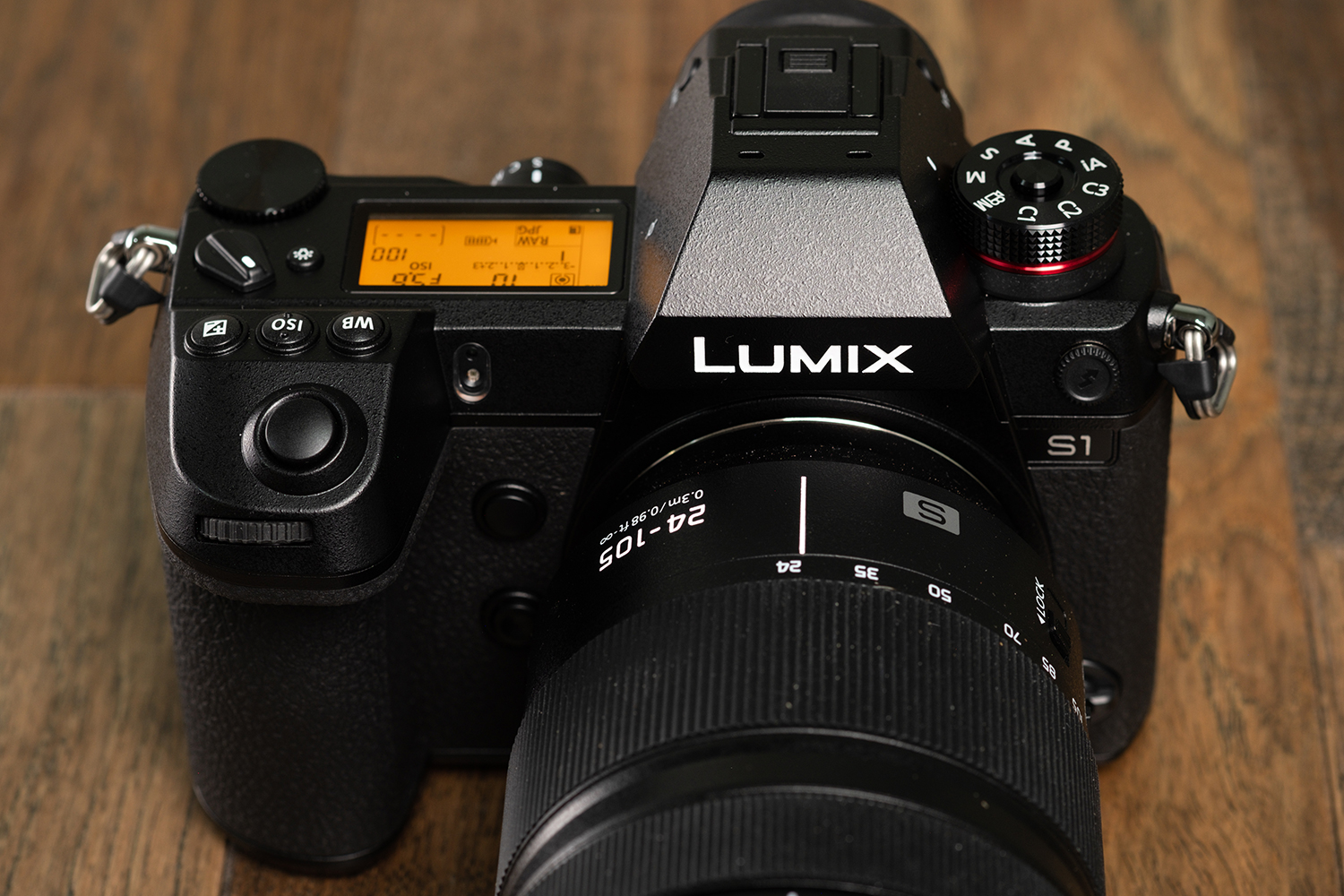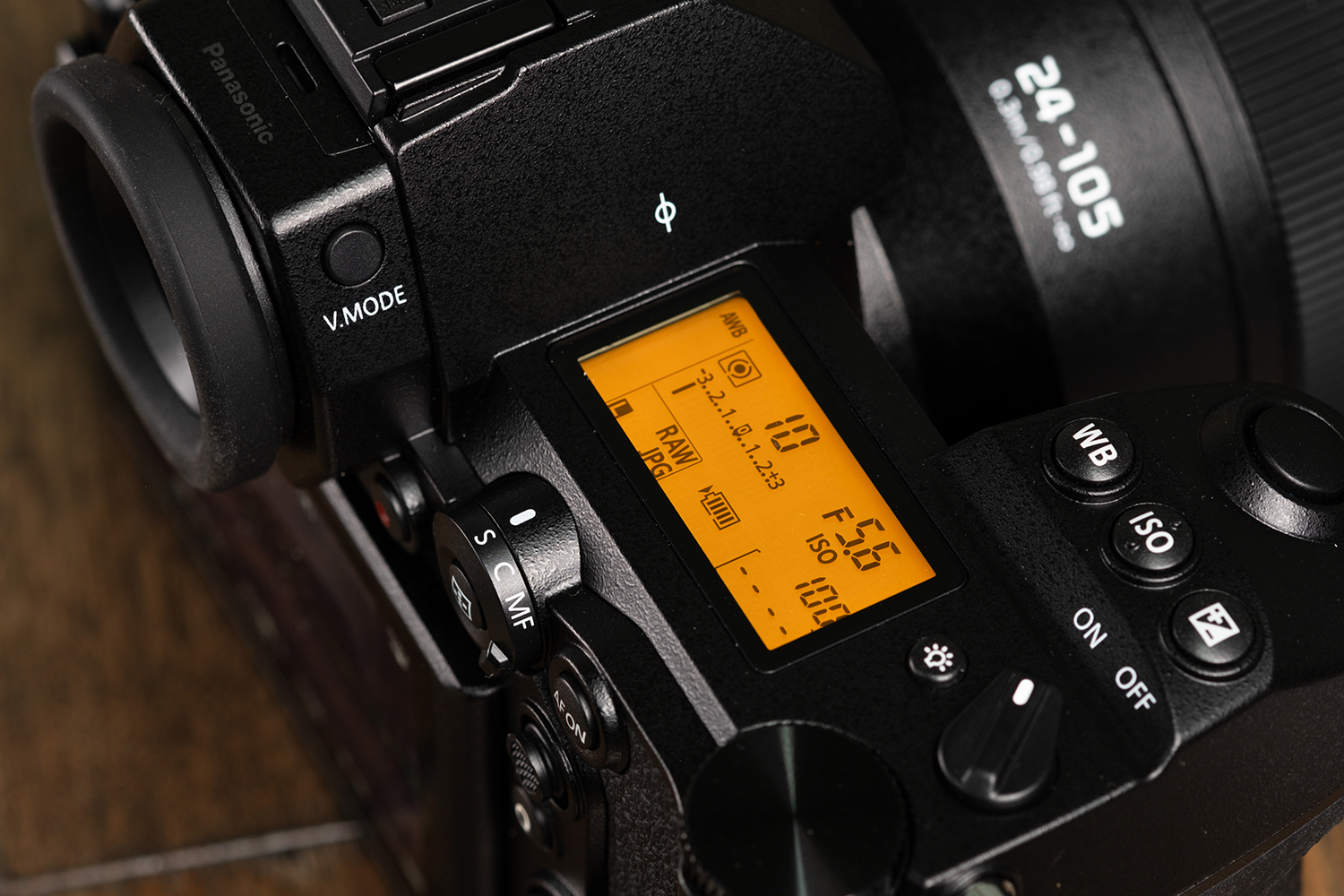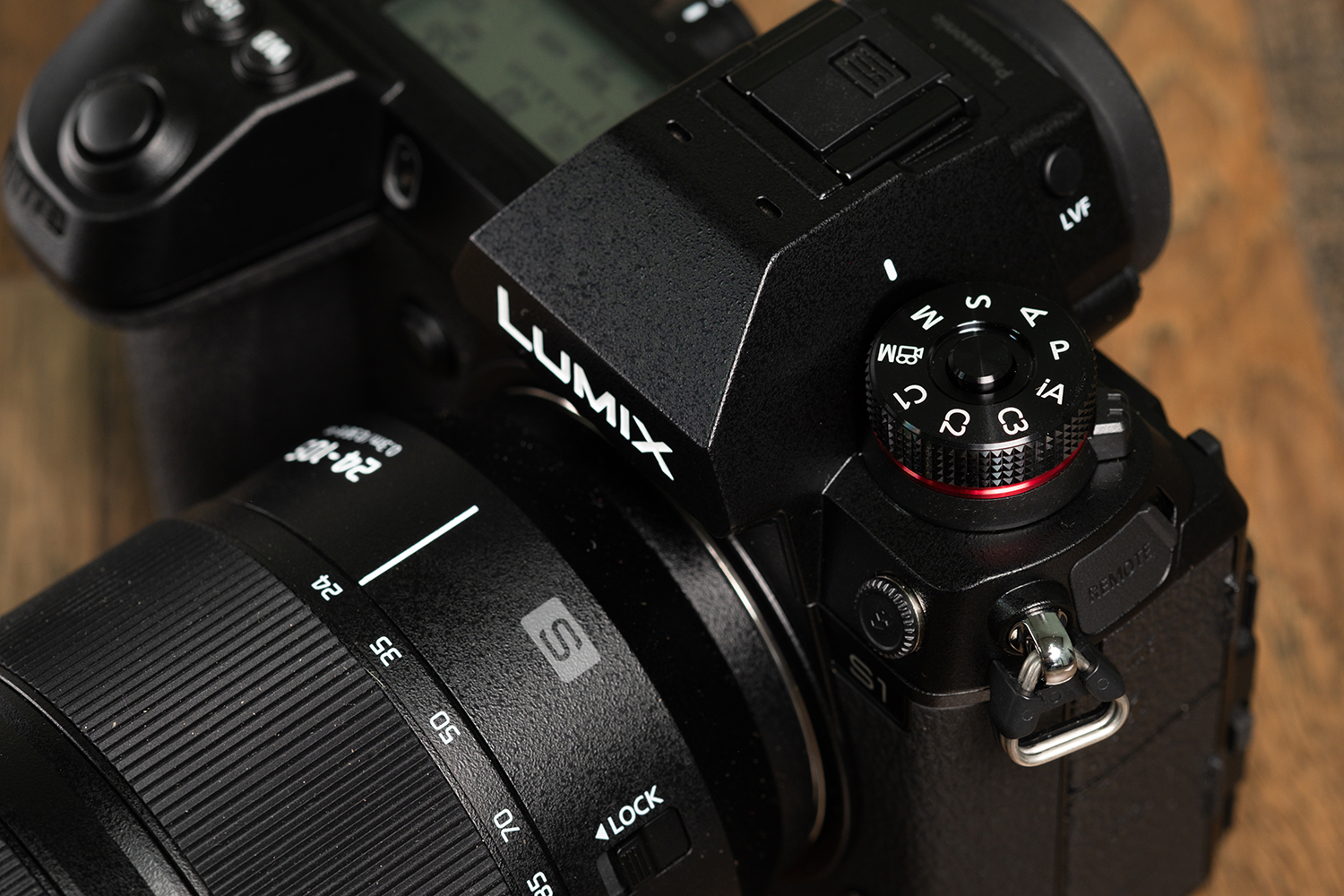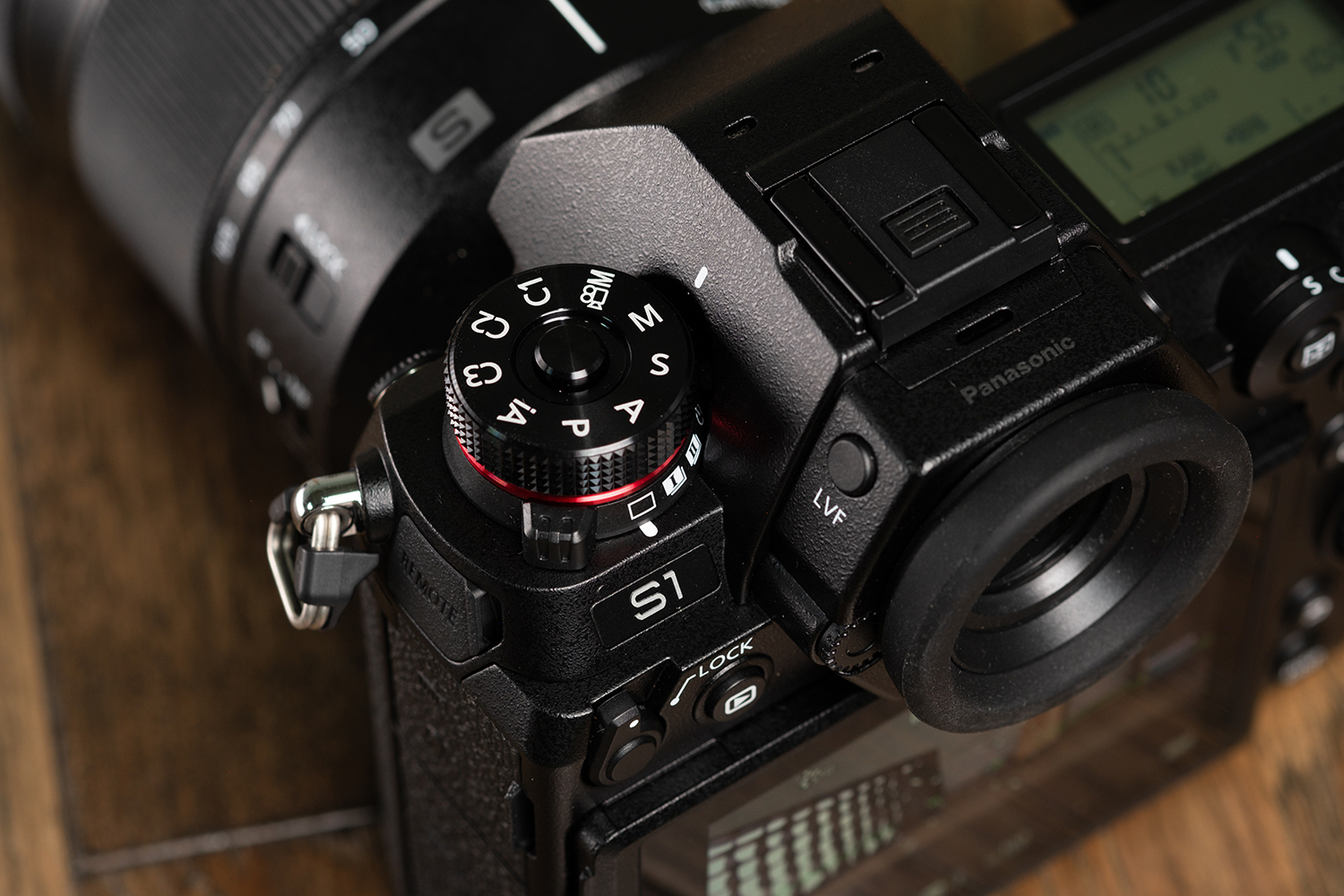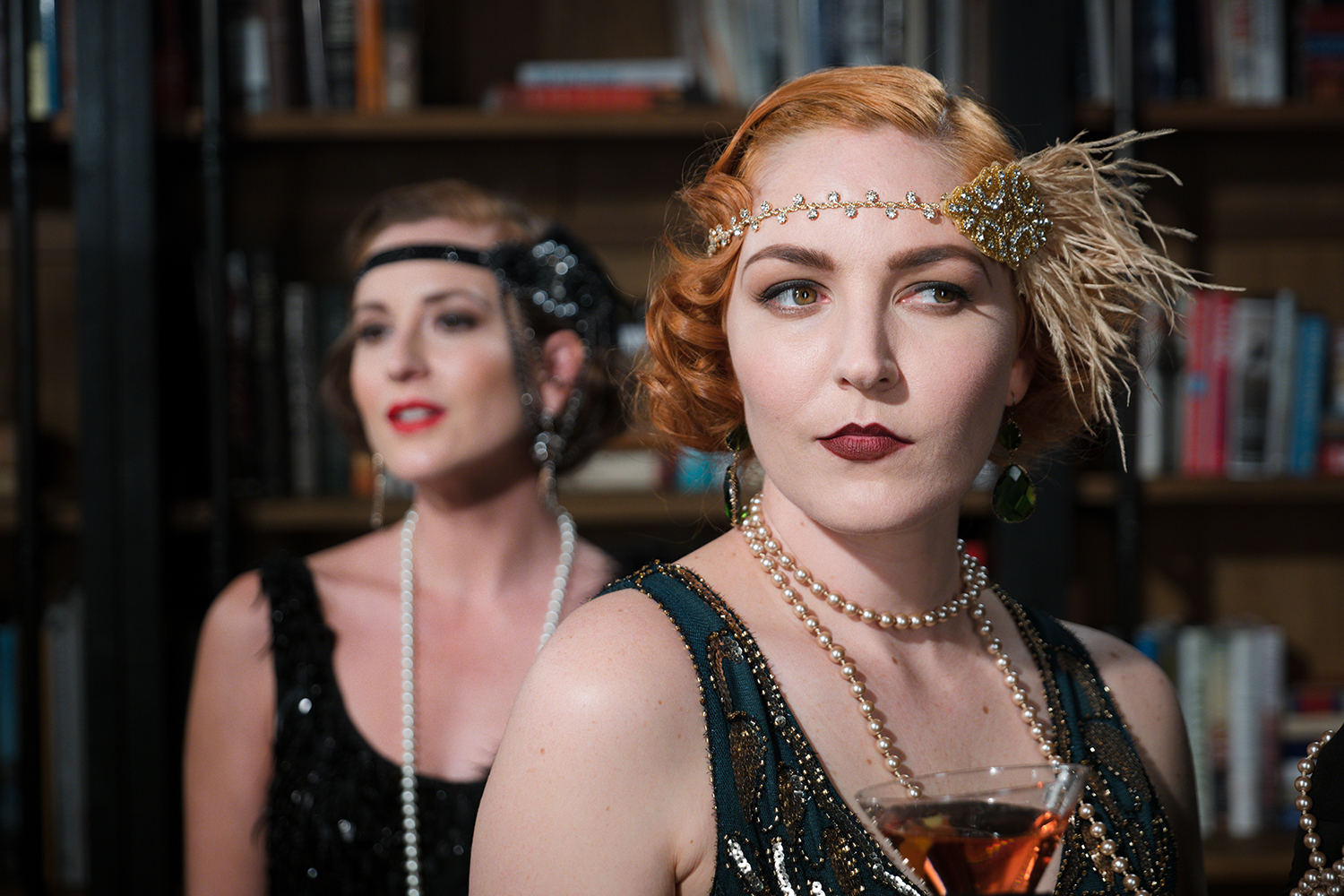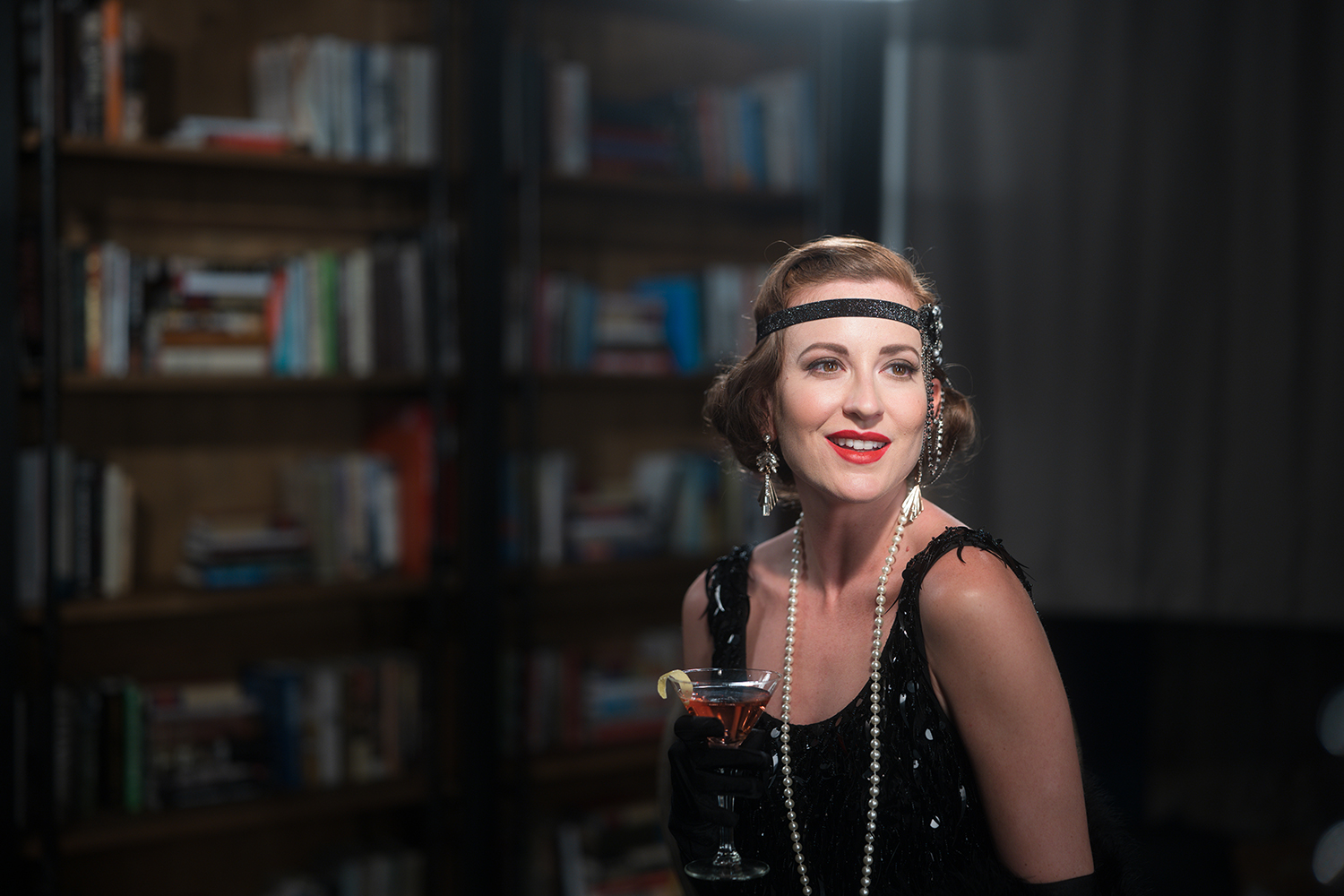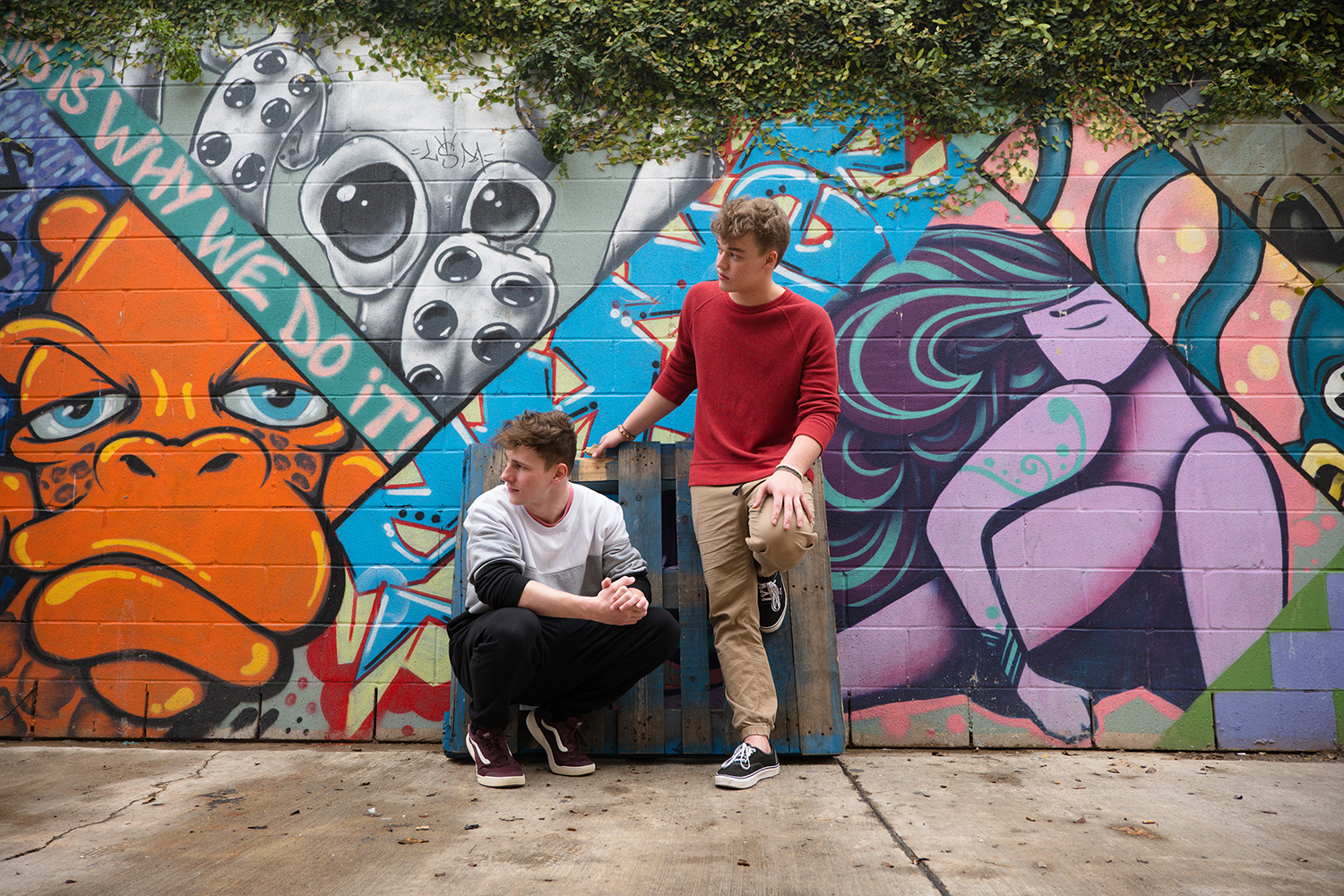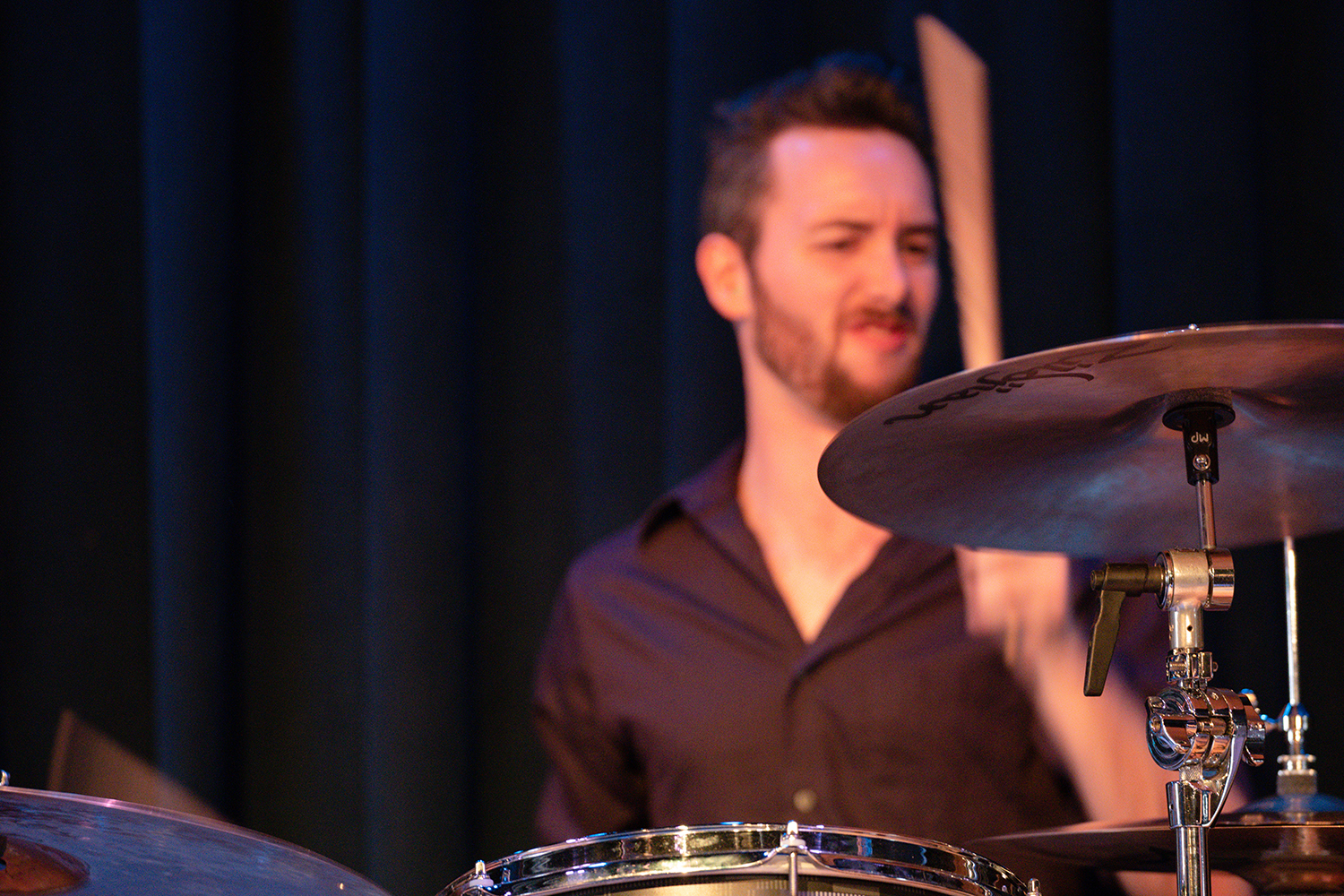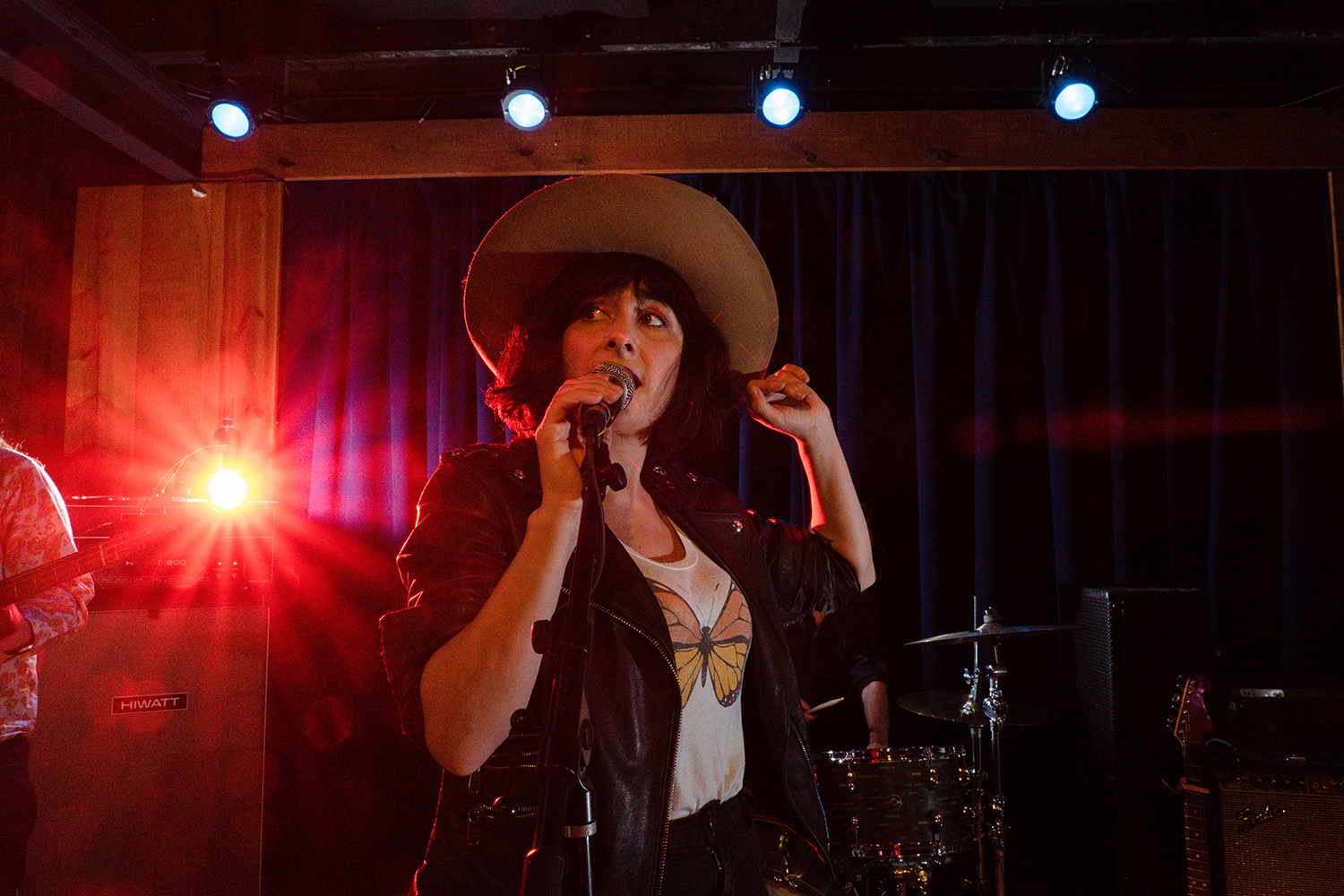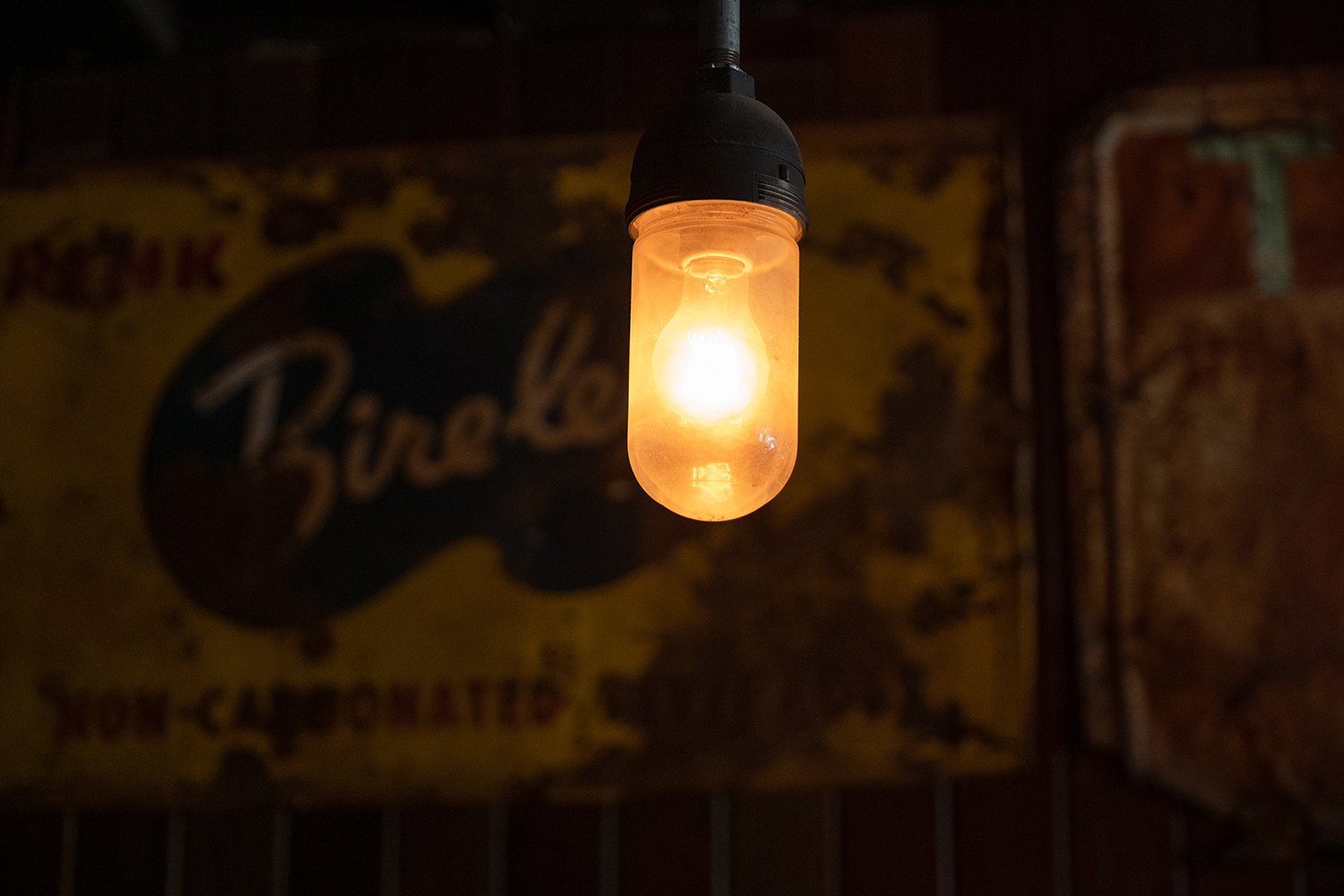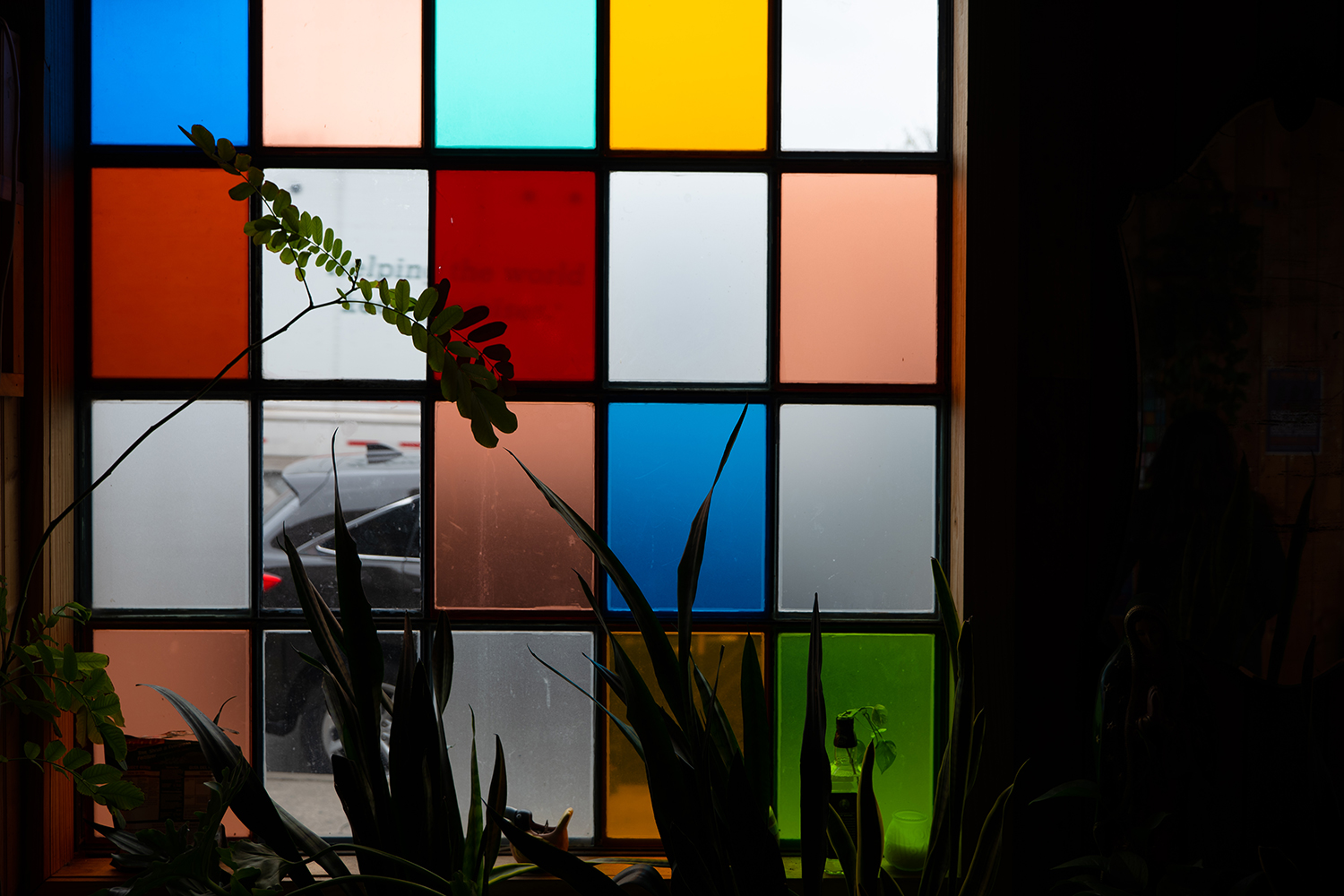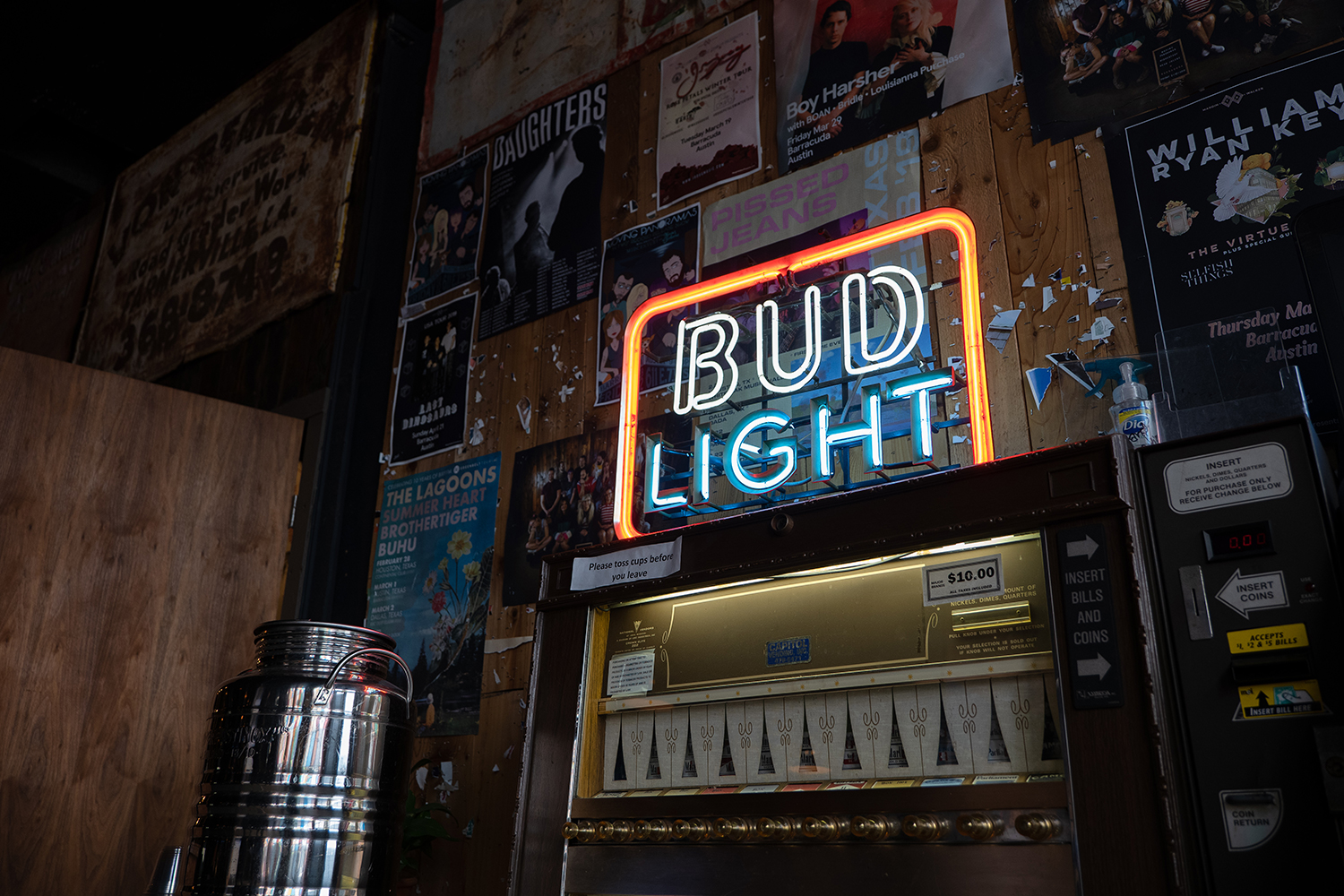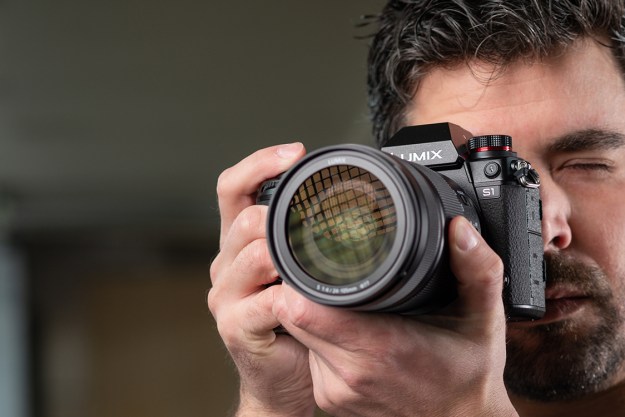
- Best viewfinder on the market
- Excellent RAW and JPEG image quality
- 96MP high resolution mode
- Exceptional build quality, control layout, and UI
- Great subject-tracking autofocus
- Big, heavy
- Intermittent autofocus errors
The Lumix S1 is not the camera I thought Panasonic would build. It is bigger, heavier, and more expensive than I expected. But it is also bolder, taking risks and trying new things other companies shy away from. Panasonic has written a new recipe for a mirrorless camera, one that leaves no ingredients on the shelf.
But if Panasonic is an underdog, it certainly isn’t acting like one. It slapped a $2,500 price tag on the S1 — $500 more than the Sony A7 III and Nikon Z 6, which are built around similar sensors. It knows it has something special here and has faith that it will be successful.
That faith is well placed. The S1 is one of the most versatile and capable cameras ever made, mirrorless or not, and it’s more impressive for being a first-generation product. It shows what’s possible when a camera is built without the usual constraints put on size and weight, and while that may limit the breadth of its appeal, it’s dominant for the right customer. Backed by the strength of two other companies, Sigma and Leica, in the heroic-sounding L-Mount Alliance, Panasonic also has a competitive edge not usually afforded to new camera systems, as more native lenses will be available for the S1 in its first year than Nikon’s and Canon’s new mirrorless systems.

Design and handling
It isn’t just image quality or performance that separates a professional camera from a consumer model. Control and durability are equally important. Panasonic knows this, and the S1 is built like a tank. At 2.25 pounds, it has half a pound on the Sony A7 III and Nikon Z 6 — in fact, it’s even heavier than even the Nikon D850 DSLR. Panasonic is embracing the fact that a mirrorless camera has much more to offer than weight savings when it comes to replacing your DSLR.
Fortunately, the S1 puts that weight to good use. It is professionally weather-sealed so it can withstand rain, snow, and dust. It has a large, comfortable grip that feels secure in your hand. It offers dual memory card slots, one SD and one XQD (which will also be compatible with CFExpress cards in the near future). There’s a full-size HDMI port, a USB-C port that can power and charge the camera, and both headphone and microphone jacks.
The body is absolutely covered in buttons, dials, and switches providing more direct access control than any other mirrorless camera. The button layout is very similar, although not identical, to that of the Lumix G9, one of the best Micro Four Thirds cameras we’ve ever tested. It is also the same as the S1R — you don’t sacrifice any usability by opting for the S1, despite it being $1,200 cheaper.
I love how easy it is to customize the controls to your liking. Simply hold a button down until the custom settings menu appears on the screen, then select the desired function for it. There’s no more digging through the menu trying to figure out which icon corresponds to which button (although, Panasonic has redesigned the menus, and that particular task is clear now).
The body is covered in buttons, dials, and switches providing more direct control than any other mirrorless camera.
The interface offers other improvements. If you want to quickly cycle through autofocus modes, ISO settings, or white balance presets, simply tap the corresponding button. You can press the button and then use one of the command dials to adjust the setting, as usual, but I was surprised by how natural it felt to tap ISO three times to raise it by a stop, rather than having to manipulate two different controls.
On the front of the camera you’ll find a two-position switch that can be set to toggle different settings. The choices are many, but I programmed it to swap between standard single-point autofocus and face/eye-detection. This let me change focus modes on the fly to fit the situation without even taking my eye from the viewfinder.
On top of the camera is an LCD information display that’s the biggest of any mirrorless camera. Turn on the backlight, and it glows a warm amber color — several of the buttons on the back of the camera also light up, although we wish all of them did.
It’s this attention to detail that makes the S1 a great camera. Even the shutter button has been angled slightly to the right to better fit your index finger. The only nagging point is the power switch, which is placed in an awkward position just behind the shutter release, but at least it’s on the right side of the camera.
User experience
Raise the S1 to your eye and the first thing you notice is how beautiful the view is through the expansive electronic viewfinder. Colors are rich, you can see detail in the highlights and shadows. It’s so sharp, you can’t make out individual pixels anywhere.
Take a picture, and the next thing you notice is how whisper-quiet the shutter is. Such a soft noise coming from such a hefty camera is confusing at first; looking at the S1, you expect the fwap-clang! of a DSLR, and instead you get something more like the muffled click of a point-and-shoot. In fact, it’s so quiet that the first time I shot the S1, I wrongly assumed it was set to electronic shutter mode, and the sound I was hearing was just a simulated noise playing through the camera’s speaker. I double-checked the settings to make sure the mechanical shutter was on; it was.

Love it or hate it, there is no getting around how much the S1 weighs. This is a heavy camera, and the trio of Lumix L-mount lenses currently available are no lightweights, either. The two zooms, a 24-105mm f/4 and 70-200mm f/4, are both well-made and feel good in the hand, but even with their relatively slow f/4 apertures, they are still quite big. The S Pro 50mm f/1.4 — which is a stunning lens — weighs over 2 pounds on its own. (It also costs $2,300 — yikes.)
If you’re looking for a lightweight system, look elsewhere. In fact, look away from full frame entirely. Panasonic will happily sell you a Micro Four Thirds camera, after all.
But despite the weight, or perhaps because of it, the S1 provides a satisfying shooting experience. It feels purposeful, determined. It’s a pickup truck; it exists to do a job. You don’t buy it to take on vacation. You invest in it to do work.
Features and specifications
If the professional control layout doesn’t sell you on the S1, the electronic viewfinder just might. We’ve seen great EVFs before, but none quite like this. The OLED panel packs in some 5.7 million pixels, 2 million more than the already excellent EVFs of the Nikon Z 6, Fujifilm X-T3, and Canon EOS R — and over 3 million more than the Sony A7 III. It can also refresh at either 60 or 120 frames per second.
Pushing that many pixels that quickly spells disaster for the battery, however. Even with a large capacity of 3050mAh, battery life is rated for just 380 shots per charge. In my experience, I made some 250 exposures before the indicator dropped to about 50 percent. It’s not a scientific measurement, and battery life varies greatly depending on use, but I would expect to get around 500 shots per charge. (A power saving mode extends this to over 1,000, according to Panasonic, but I did not test this.)
You’ll love the beautiful view through the expansive electronic viewfinder.
At any rate, it’s a small price to pay for the best EVF on the market. It’s virtually impossible to detect individual pixels, even when looking at the fine text in the exposure meter, for example. It’s a beautiful piece of engineering and should ease any lingering concerns that a diehard DSLR user may have about giving up their optical viewfinder.
Feeding that EVF is a 24-megapixel sensor with no anti-aliasing filter, providing sharper details at the potential cost of moiré. That’s a little more than half the resolution of the Lumix S1R’s 47MP, but it’s more than enough for most photographic tasks.
It also helps for continuous shooting. Both cameras can churn out 9 frames per second (6 with continuous autofocus), but the S1 can maintain that for much longer. In our testing, we captured 75 images at 9 fps before the buffer filled up, compared to just 32 for the S1R, when using the XQD card.
And if 24 megapixels aren’t enough for you, place the camera on a tripod and turn on High Resolution Mode to create a 96MP image. The S1 is basically two cameras in one, giving you lower resolution when you need speed, and ultra-high resolution when you need detail for landscapes or still life subjects. (If you really need to maximize detail, the high resolution mode on the S1R outputs a staggering 187MP.)

High resolution mode works by taking eight images and combining them into one, but it shifts the sensor by microscopic amounts between each. Not only does this capture additional spatial resolution, but it also cancels out the effect of the Bayer filter by recording full RGB color data at every pixel location. Also, it dramatically reduces the chance of moiré.
It’s made possible thanks to the 5-axis sensor-shift stabilization system in the S1. Beyond high resolution mode, this offers up to 6 stops of shake reduction when paired with an optically stabilized lens. That’s 1 to 1.5 stops less than what you get in the Olympus OM-D E-M1X, but it still makes a huge difference in real-world conditions, for both stills and video.
Autofocus
The one controversial line the S1’s spec sheet is contrast-detection autofocus. Panasonic opted against the faster phase-detection autofocus in favor of its own Depth from Defocus (DFD) technology, which is basically hyper-advanced contrast detection. Phase-detection is the gold standard of autofocus, as it not only knows when an image is in or out of focus, but also whether an out-of-focus image is front- or back-focused. That means it knows which direction to turn the lens to achieve focus, speeding the process up and generally removing the focus “hunting” that occurs in contrast-detection systems.
DFD closes the gap between contrast and phase detection by continuously comparing two images at slightly different focus positions, then analyzing the change in blur between the two to determine which direction, and by how far, to move the focus. This runs at a blazing 480 frames per second on the S1, good for a claimed focusing speed of 0.08 seconds — within striking distance of the best phase-detection systems.

It works well about 90 percent of the time. Comparing it side-by-side with a Canon EOS RP (which uses phase-detection), I couldn’t tell a difference in speed at all, even when quickly focusing back and forth between near and distant subjects. In this scenario, it was flawless.
However, in other situations the autofocus would sometimes hunt before locking in, causing a significant delay before I could snap the picture. It felt almost random. Autofocus would work for a while, and then suddenly start hunting for no apparent reason. This could be a problem if your photography demands a fast reaction time.
The S1 also gets advanced subtract tracking thanks to deep learning. It can recognize people, either full bodies or just the faces and eyes, and some animals. This feature works even at long distances. As you can see in the video at the top of the page, which was shot on the S1, it also works in continuous mode. Even without a 180-degree flip screen, I could trust the camera was keeping me in focus. However, you can notice some “breathing” in the background highlights — that’s the DFD system slightly adjusting focus to create those comparison images it needs.
Image quality
While S series customers likely skew toward professional and will shoot in RAW, it’s worth noting the S1 produces some of the best out-of-camera JPEGs I’ve ever seen. Panasonic’s color science is really dialed in here. Skin tones look fantastic, with perfect color and tonality that softens shadows on your subject without removing too much contrast. It’s a look that is difficult to copy when working with the RAW file. (All RAW images were converted to Adobe DNGs, as third-party RAW support for the S1 wasn’t available at the time of this review. Image quality may change slightly when the files are officially supported.)
Of course, the JPEGs won’t hold up to manipulation in postproduction. That is where the RAW files come in, and the S1’s are every bit as malleable as those from Sony and Nikon, and perhaps even more so. This is where the camera benefits from its DFD autofocus system. By not layering phase-detect pixels over the sensor, you can push exposures much further without running into banding.
High ISO performance is also solid, with good noise levels through ISO 25,600. The top ISO of 51,200 is usable at reduced image sizes, but does show a significant jump in noise in dark areas. This is where the S1 has an edge over the S1R, which tops out at ISO 25,600 and exhibits slightly more noise throughout the ISO range. You can boost the S1’s ISO even higher, to 204,800, but expect heavy noise at that setting.
The one thing to watch out for with the S1 is moiré. Without an anti-aliasing filter, certain fine patterns — like the threads in clothing — can create interference with the pixels, leading to a rainbow-like effect (this is demonstrated in the video at the top of the page). I only noticed this once throughout my review, but if photograph a lot of portraits, particularly fashion where clothing itself is the subject, this could cause a problem.
To be fair, this is no different than other cameras of similar resolution that lack anti-aliasing filters — like the Nikon Z 6 — but it is one reason why some photographers should opt for higher-resolution models. With nearly twice the pixels, the 47MP S1R will be much less prone to moiré. Again, for nonmoving subjects, high resolution mode offers another solution.
Video quality
The S1 may not be the GH5 of the full-frame world, but it packs a punch when it comes to video. It can shoot 4K at 24 and 30 frames per second from the full width of the sensor, or at 60 frames per second from a cropped region of the sensor. It can also produce in-camera slow motion using a high framerate mode. It doesn’t have the 400-megabit-per-second codec of the GH5, but it can still output a clean signal over HDMI (which uses a full-size Type A connector). In the future, a paid firmware update will unlock V-log and 4:2:2 10-bit recording.
Video quality in 4K at 24 fps is quite good. There’s plenty of detail and color, and it’s certainly enough for the still photographer who needs to shoot video on the side. High framerate mode does reduce quality, and is much more susceptible to moiré, as you can see in the sample video. That isn’t great, but it’s also not uncommon — most cameras drop quality significantly in high framerate mode.
For now, the S1 is a capable video camera that finds itself among the best of its peers in the full-frame world, even if it doesn’t quite match the smaller-format GH5. It will also get better in the near future, at least for customers who don’t mind shelling out an as-yet-unstated price for the V-Log update. But with Nikon soon offering RAW video output on the Z series, Panasonic may need to work harder to win over hybrid still/video shooters. Given the S1’s high starting price, good enough isn’t good enough.
Our Take
Panasonic is taking a big risk with the Lumix S series. Not only is it stepping into full-frame territory for the first time, it’s doing so with a camera that throws out conventional wisdom about what a mirrorless camera should be. It’s big, it’s heavy, and it’s magnificent. Whether Panasonic can win working professionals away from the more established brands of Nikon, Canon, and Sony remains to be seen, but the S1 is certainly up for the challenge.
The S1 isn’t perfect, however. Autofocus errors, as intermittent as they are, are a cause for concern. Softness and moiré in slow-motion video could make the feature unusable. On a $2,000 camera body, these would be somewhat forgivable; on a $2,500 body, customers are going to be more critical.
That said, from the perspective of both image quality and features, the S1 remains the most impressive mirrorless camera I have used to date, and it’s only going to get better. Sigma recently announced it would bring 11 of its high-end Art lenses to the L-mount, and of course Leica already makes several (not that most people could afford them). This will accelerate the maturation of the S series at a pace Canon and Nikon simply can’t match.
How long will it last?
The S1 is sturdy and professionally weather sealed. It should hold up to the demands of working photographers for years. This is a new system, so we don’t yet know what Panasonic’s upgrade schedule will be, but it will likely be 2 to 3 years before a replacement camera hits the market.
Is there a better alternative?
There isn’t any one camera that’s definitively better than the S1, but several have specific features that might matter to you. If you want a smaller camera without giving up the full-frame sensor, the Sony A7 III is a good choice — it’s also cheaper and uses phase-detection autofocus.
No other camera can match the S1’s combination of features, image quality, durability, and control layout. It also has the best EVF in the business.
Should you buy it?
Yes. For those who want the best at any cost, the Lumix S1 makes a strong case for your money.
Editors' Recommendations
- Sony’s Airpeak S1 drone goes on sale, though it ain’t cheap
- Sony’s first drone, the Airpeak S1, rockets to 55 mph in just 3.5 seconds
- The Nikon Z 7 II and Z 6 II are coming October 14: Here’s what we want to see
- Sony A7S III hands-on: Confessions of a devout Panasonic user
- The Panasonic Lumix S5: Everything we know


